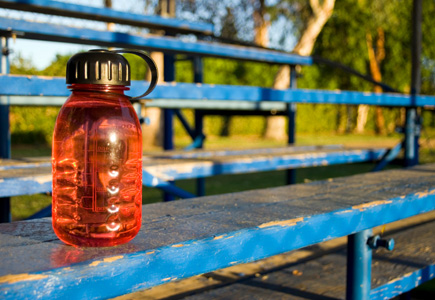
There’s a lot of talk and confusion about BPA recently … at least within the water-bottle world. Here’s the latest on the scandals and a brief history of water bottles in America. Hopefully this will clear up a few things and help you make an educated choice about buying water bottles for you and your family.
Nalgene
Remember Nalgene? These bottles used to be all the rage, until early 2008 when the clear ones were found to leach BPA. Clear Nalgenes and other similar bottles are made from polycarbonate plastic (usually marked with the recycling number 7, a good way to spot them). The verdict is still out on the opaque Nalgenes, but most people would rather be safe than sorry.
SIGG
After Nalgene’s BPA scandal, water bottle lovers made a big push for metal bottles made of aluminum and stainless steel. One company in particular, SIGG, seemed to rise to prominence for selling a highly functional, durable, and stylish product that was environmentally friendly and (purportedly) “chemical-free.” SIGG claimed that numerous tests in the United States and Switzerland found absolutely no evidence of chemical leakage into the water. Well … you can probably see where this is going.
Latest developments
Surprise: Last month, SIGG announced that the protective inner liner of its older aluminum bottles contained traces of BPA. SIGG still maintains that all testing “revealed absolutely no migration or leaching of BPA or any other substance from the protective inner liner,” according to a letter from CEO Steve Wasik on the company’s website. So while the liner did contain BPA all along, users were still totally safe … right?
SIGG is now being accused of “greenwashing,” or exaggerating the health and environmental properties of their bottles to make a profit. Some critics claim that SIGG took advantage of the backlash against polycarbonate bottles to push its aluminum bottles into market victory.
What’s next?
From Steve Wasik’s letter: “To be clear, all SIGG bottles made since August 2008 contain our new BPA free EcoCare liner. SIGG bottles manufactured prior to August 2008 have the former water-based epoxy liner which contains trace amounts of BPA.” SIGG contends that its old bottles (even though they contain BPA) do not leach BPA and are 100% safe. At this point, however, many SIGG users don’t want to risk it.
If you have an old bottle (pre-August 2008), and you write to the company to complain, SIGG will replace it with a new BPA-free EcoCare bottle — you just have to pay for shipping.
Read more details on the SIGG website.
Even though aluminum SIGG bottles are still probably safe, it looks like the next era of bottle history will be the steel era. For now, I recommend stainless steel bottles.
No comments:
Post a Comment